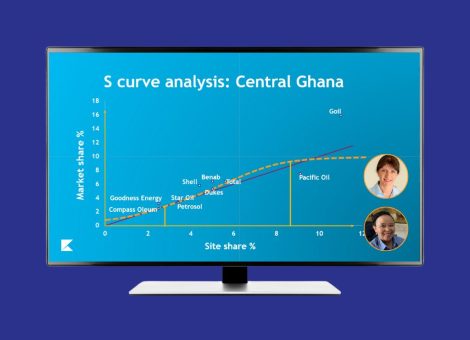Seven factors that influence fuel price changes
We will examine these factors from two angles: macroeconomic and microeconomic. Macroeconomic factors will influence the industry overall, whereas microeconomic factors will influence what the consumer pays.
What are the macro factors?
From global weather patterns to geopolitical crises, the factors that influence change are varied and many.
1. State of emergency
In a circled state of emergency in the United States, protectionist measures apply. You may not be able to change prices due to the requirement that you maintain the margin of a previous period. This is for consumer protection and will affect the way you price on an individual station level.
2. Disruptive weather
Any weather that leads to either a state of emergency (see above) or disruption in the oil supply chain or has an impact on consumer demand could influence price changes.
3. Geopolitical crises
Regardless of whether the disruption is real or perceived, supply disruption due to geopolitical events can affect fuel price changes.
4. Industry events
An event specific to the oil industry, such as a refinery outage, can create both perceived and actual disruption. Additionally, if there is a negative PR effect, an oil brand may lower price to try to protect demand and reputation — though it would be difficult to point to a direct example of this occurrence (due to lack of public communication on the decision-making process).
5. Balance
Finally, there is something running underneath all of these factors that truly drives price changes to you, the retailer. That something is the fact that the fuel supply chain itself is a continuous, highly liquid process. In other words, it only works well when supply and demand stay reasonably in balance. Fuel retailers, suppliers, etc. tend to perform better in this equilibrium. If either demand or supply is seriously impacted, that impact will naturally have an effect on prices. Consequently, human intervention will occur. The ability to impact supply gives OPEC an increasingly limited, but powerful, ability to move crude oil prices at will. Retailers or suppliers will attempt to restore demand by dropping prices, or, conversely, drive up prices to throttle demand when supply is constrained.
All of the above factors influence price to you — but importantly, what influences price to you may also reach the consumer. Then again, you might make your pricing decisions based on a micro factor instead.
What are the micro factors?
6. Competitor prices
Microeconomic factors tend to involve consumers and competitors. What might convince you that you should change prices at one station or in one network? Probably the price changes of your competitors. Today, those types of changes are highly transparent; consumers can acquire prices and price data and make comparisons and choices accordingly. Because of the growing demand for consumer awareness, retailers have had to become more cognizant of competitor prices.
To really dive into the way competitors can (but perhaps shouldn’t) affect your pricing, consider how you perform and how they perform in each of the seven elements: market, location, facilities, operations, merchandising, brand and price. Maybe you have the pricing power to price high because your other offerings can act as volume magnets. Or maybe you need to price lower to maintain volume because you haven’t established your brand as strongly as your competitor has. There are lots of ways to reach volume goals; find out which are your best bets.
7. Strategic imperatives
As a retailer, goals for revenue, cash and profit across your station or network will impact fuel price changes. If you know you’re behind on cash through the till, you might stimulate growth by influencing prices. At Kalibrate, we refer to these goals as strategic imperatives: How far away are you from where you need to be, and can you successfully adjust prices to get there?
How can you benefit from understanding these factors?
Though many factors influence fuel price changes, a few stand out as the most important considerations for retailers: the ones you can control. Your ultimate goal should be to understand every customer individually; in that way, the fuel industry is no different than any other business. One good step toward understanding your customer is understanding how they respond to price and the other six volume-draw elements. You can use that information to create pricing power. And once you have that, you can make better decisions about how you let your price be influenced by the price change influencers listed in this post.
Download the fuel compliance assurance checklist
Read more articles about:
Fuel pricingSubscribe and get the latest updates
You may unsubscribe from our mailing list at any time. To understand how and why we process your data, please see our Privacy & Cookies Policy
Related posts
Fuel pricing
Fuel pricing by exception: When do analysts actually analyze?
Managing fuel prices can be time-consuming, especially when analysts spend much of their day on routine tasks....

Fuel pricing
Middle East / Africa - Fuel network planning: Critical insights
Join our team as we look at the key points of insight that fuel network planners need to consider when making...

